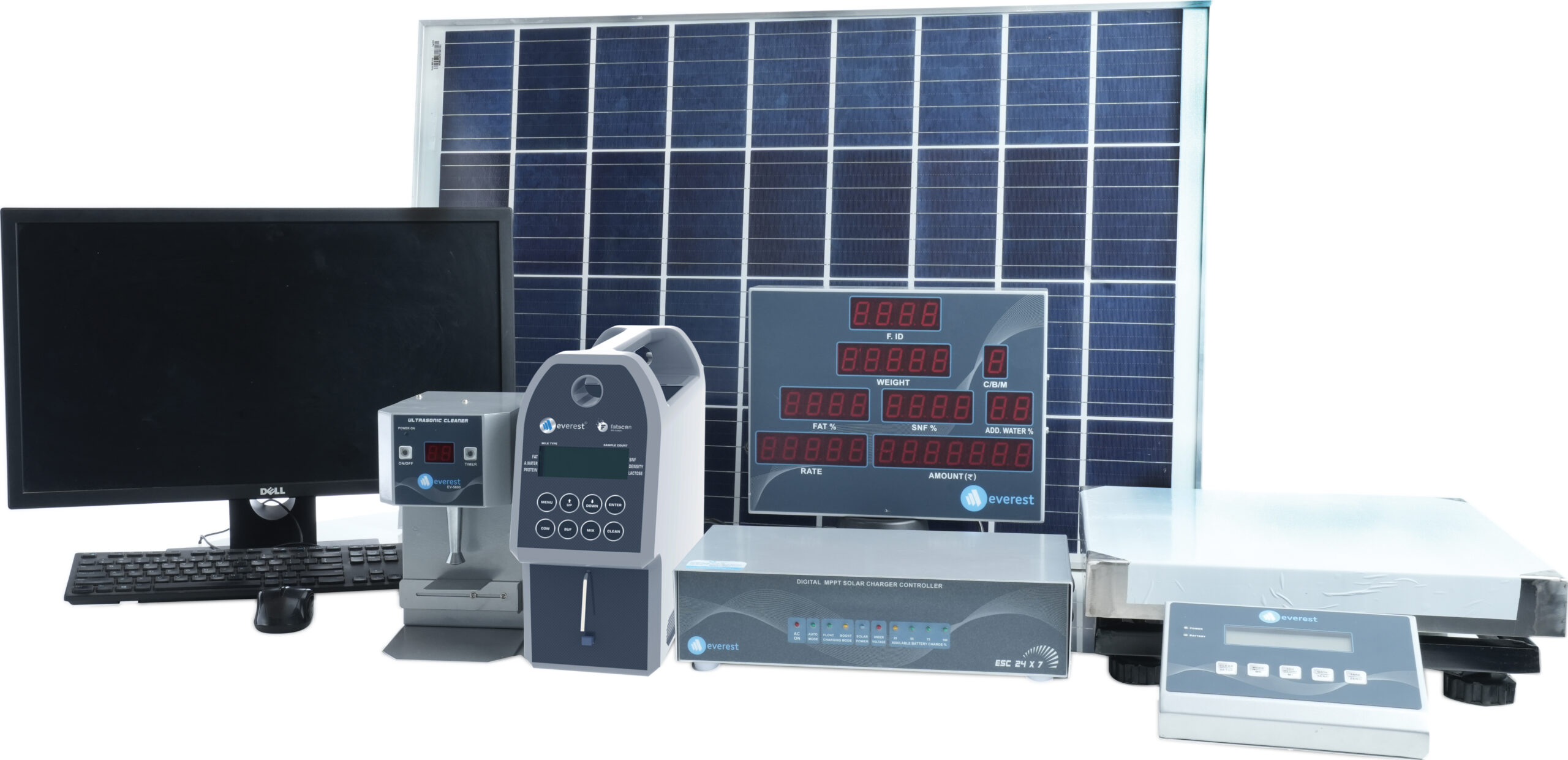Milk Collection System: Foundation of a Transparent and Efficient Dairy Industry

Milk is a staple food in millions of households worldwide. From urban cities to rural villages, its demand is constant and growing. Behind the simplicity of a milk packet lies a complex and well-organized supply chain, starting at the grassroots level. At the heart of this value chain is the milk collection system — a process that brings milk from small and large-scale farmers to dairy processors. This system is crucial for maintaining milk quality, ensuring timely payments, and empowering dairy farmers.
What is a Milk Collection System?
A milk collection system refers to the process and infrastructure used to collect raw milk from farmers and transport it to chilling centers or dairy processing plants. It includes milk collection centers, equipment for testing and weighing, transportation vehicles, and data recording tools. These systems can range from traditional manual setups to fully automated and digitized solutions depending on the scale and region.
Components of a Modern Milk Collection System
1. Milk Collection Center (MCC)
These are the designated points, often in villages, where farmers bring their milk. MCCs are typically managed by dairy cooperatives or private dairies. They are equipped with the basic infrastructure to collect, test, and record milk from multiple suppliers. A well-managed MCC acts as the first point of quality control and transaction transparency.
2. Weighing Scale
Digital weighing scales are used to accurately measure the quantity of milk supplied by each farmer. This ensures fair pricing and eliminates discrepancies in volume. High-precision electronic scales help reduce human error and promote accountability.
3. Milk Analyzer
Milk analyzers are used to test quality parameters such as fat content, SNF (solids-not-fat), protein, and water content. This data determines the price a farmer receives for their milk. Advanced models can even detect adulteration or added water.
4. Data Management System
Automated milk collection systems include software for recording and storing transaction details. These systems also generate payment slips and track historical data for each farmer. With cloud integration, data can be accessed in real-time by dairy operators and farmers alike.
5. Storage and Transport
Collected milk is stored in cans or bulk milk coolers (BMCs) to maintain its freshness. It is then transported using insulated vehicles to chilling plants or dairy units. Timely and hygienic transport ensures the milk remains unspoiled during transit.
Manual vs. Automated Milk Collection
Traditional milk collection involves manual record-keeping, which is prone to errors and manipulation. In contrast, Automated Milk Collection Systems (AMCS) integrate hardware and software to digitize the entire process. AMCS units typically include weighing machines, milk analyzers, computers, printers, and payment gateways. Some even use RFID cards or biometric identification to link each transaction to the correct farmer.
Advantages of Modern Milk Collection Systems
1. Transparency and Fair Payments
Automated systems generate real-time receipts, ensure accuracy in quality testing, and eliminate chances of fraud. This builds trust among farmers and encourages regular milk supply.
2. Quality Assurance
Testing milk for quality at the source helps identify and reject adulterated or low-quality milk, ensuring that only high-grade milk enters the supply chain. This protects the integrity of dairy products and supports public health.
3. Time and Labor Efficiency
Automation reduces the time needed for each transaction, improves operational efficiency, and reduces human errors. It also allows collection centers to serve more farmers each day.
4. Data and Traceability
Digital records make it easy to trace every batch of milk back to its source. This improves accountability and helps with certifications, audits, and farmer support schemes. It also simplifies management for dairy processors.
5. Empowerment of Farmers
With regular payments, accurate data, and proof of contribution, farmers can access credit, invest in better livestock, and increase their income. They are better integrated into the formal economy.
Challenges in Milk Collection Systems
Despite its importance, several challenges persist:
- Lack of cold chain infrastructure in remote areas
- Limited digital literacy among farmers
- Inconsistent power supply affecting automation
- High initial investment in AMCS setup
However, solutions such as solar-powered units, mobile-based milk collection, and government support are helping to bridge these gaps. Financial assistance and training programs from cooperatives and NGOs also play a vital role in scaling adoption.
Impact on Rural Economy and Dairy Growth
A reliable milk collection system boosts rural economies by creating jobs, increasing farmer income, and promoting local entrepreneurship. In countries like India, where a significant population depends on dairy farming, these systems play a major role in improving livelihoods and ensuring food security. It also enables women farmers and smallholder producers to actively participate in economic growth.
The Future of Milk Collection
The next phase of milk collection will involve technologies like AI for predicting milk yield, blockchain for traceability, and IoT for real-time monitoring. As dairy demand grows, a robust, tech-enabled milk collection system will be vital in ensuring safety, efficiency, and sustainability. Smart sensors and cloud analytics can also offer predictive maintenance and optimize logistics.
Conclusion
The milk collection system is the backbone of the dairy industry. It ensures that high-quality milk reaches processing centers, farmers are paid fairly, and the entire supply chain operates efficiently. With advancements in technology and increasing awareness, the transformation from manual to automated systems is accelerating.
Investing in modern milk collection not only strengthens the dairy sector but also uplifts rural communities and contributes to national food security. As the world moves toward digital agriculture, milk collection systems will continue to evolve—bringing transparency, efficiency, and empowerment to the heart of the dairy ecosystem.



